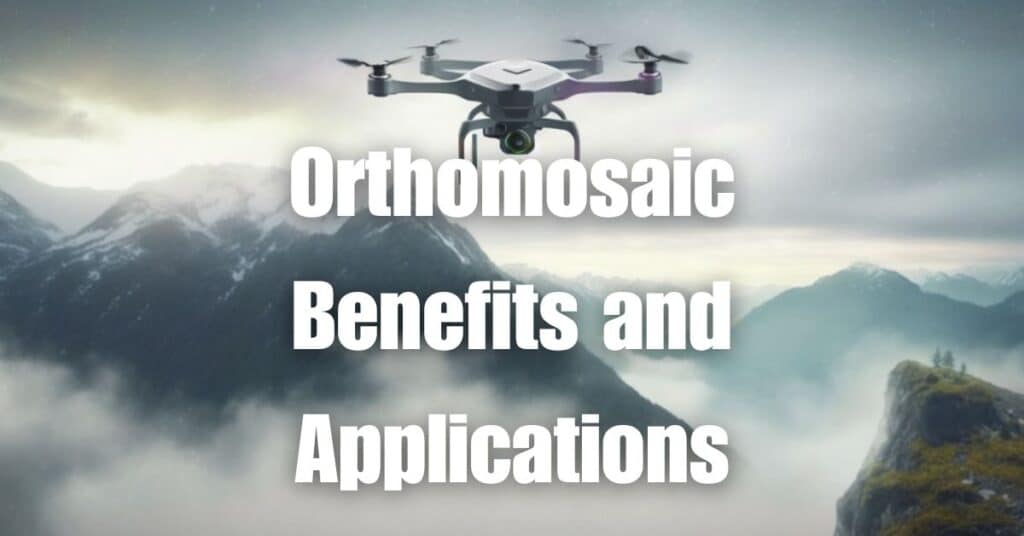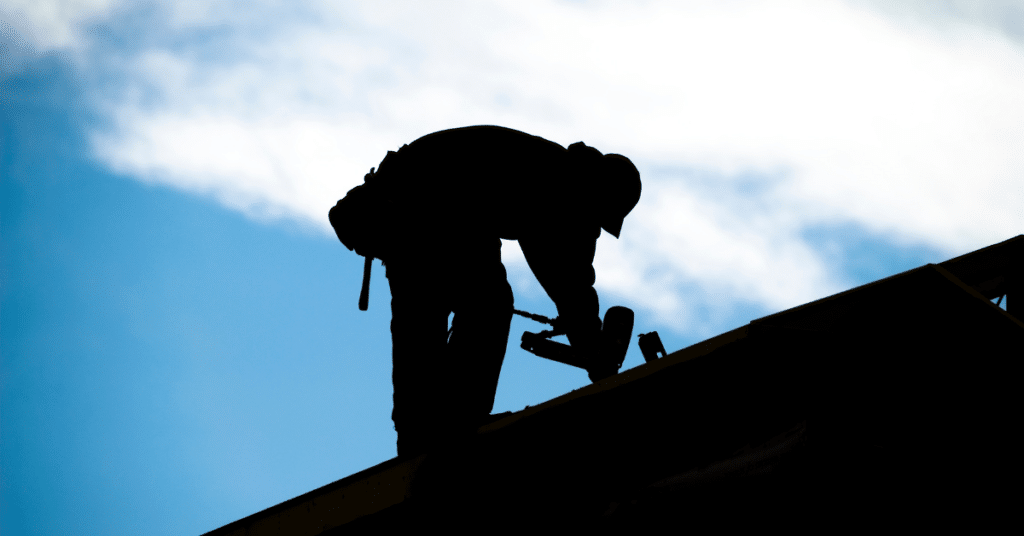In today’s technologically-driven world, the importance of accurate and comprehensive geospatial data cannot be overstated. One groundbreaking technology that has revolutionized how we capture and analyze this information is aerial orthomosaic. By delivering unparalleled accuracy and flexibility, orthomosaic benefits and applications have become essential for various industries. In this article, we’ll explore the wonders of aerial orthomosaic, its benefits, and the numerous applications it offers across multiple sectors.
What is Aerial Orthomosaic?
What is an Orthomosaic?
An orthomosaic, also known as an orthophoto or orthoimage, is a geospatially corrected aerial photograph that has been stitched together from multiple images, eliminating distortions caused by differences in camera angle, terrain elevation, and other factors. This results in an accurate, high-resolution, and distortion-free representation of the Earth’s surface, suitable for use in various mapping and analysis applications.
Difference Between an Orthomosaic and a Regular Aerial Photograph
While a regular aerial photograph captures a specific point of view, it may contain distortions due to the camera’s angle, distance from the ground, and differences in elevation across the photographed area. An orthomosaic, on the other hand, undergoes a process of rectification and stitching to create a seamless, distortion-free, and geospatially accurate representation of the area. This makes orthomosaics more suitable for accurate measurements, mapping, and analysis, whereas regular aerial photographs are better suited for visualization and qualitative assessments.
The Process of Creating Aerial Orthomosaic
How is an Orthomosaic Created?
The process of creating an aerial orthomosaic involves several steps, including drone-based photogrammetry, image processing, and orthomosaic generation. Here’s an overview of the process:
Drone-based Photogrammetry
The first step in creating an orthomosaic is to capture high-resolution aerial photographs of the area of interest using a drone equipped with a high-quality camera. The drone follows a pre-planned flight path, capturing overlapping images to ensure full coverage of the area. The overlap between images is critical for the subsequent image processing and stitching process.
Image Processing and Orthomosaic Generation
Once the aerial photographs are captured, specialized software is used to process the images. This involves:
- Identifying common points (tie points) in the overlapping images to determine their relative positions.
- Correcting geometric distortions caused by camera angle, terrain elevation, and other factors through a process called orthorectification.
- Merging the rectified images into a single, seamless orthomosaic.
Orthomosaic Software Comparison
There are several software options available for creating orthomosaics. Some popular choices include:
- Pix4Dmapper: A comprehensive photogrammetry software that offers a wide range of tools for creating orthomosaics, digital elevation models, and 3D models.
- Agisoft Metashape: A versatile software that supports both aerial and close-range photogrammetry, capable of generating high-quality orthomosaics and 3D models.
- DroneDeploy: A cloud-based platform that provides an easy-to-use interface for creating orthomosaics, digital elevation models, and other geospatial data products.
Each software option has its own set of features, capabilities, and pricing, so it’s essential to carefully evaluate your needs and budget before choosing the right one for your project.
Cost of Creating an Orthomosaic
The cost of creating an orthomosaic depends on several factors, including the size and complexity of the area, the drone and camera equipment used, the software chosen for processing, and any additional data processing and analysis requirements. While some costs can be minimized by using cost-effective equipment and software, it’s essential to strike a balance between affordability and quality to ensure accurate and reliable orthomosaic outputs.
Orthomosaic Benefits
Increased Accuracy
What is the Accuracy of Orthomosaics in Mapping?
Orthomosaics provide a high level of accuracy in mapping due to their geospatially corrected nature. By eliminating distortions caused by camera angle, terrain elevation, and other factors, orthomosaics can achieve accuracies within a few centimeters, depending on the quality of the input data and processing techniques. This makes orthomosaics an ideal tool for applications requiring precise measurements, such as land surveying, infrastructure planning, and environmental monitoring.
Time and Cost Efficiency
Cost-effective Orthomosaic Creation Methods
Orthomosaic technology enables the efficient collection of high-resolution geospatial data over large areas, significantly reducing the time and cost associated with traditional surveying methods. By leveraging drone technology, orthomosaic data can be collected quickly and with minimal manpower. Furthermore, advances in image processing software have made it possible to generate orthomosaics more efficiently, reducing both the time and cost associated with data processing and analysis.
Comprehensive Coverage
Orthomosaics provide comprehensive coverage of large areas, allowing for the creation of detailed, high-resolution maps and analyses. This is particularly useful for applications such as land management, agriculture, and urban planning, where a thorough understanding of the landscape is essential for making informed decisions.
Versatility
Orthomosaics are highly versatile, serving as a foundational dataset for various geospatial analyses and applications. They can be used in combination with other geospatial data layers, such as digital elevation models, to create 3D models, perform volumetric analyses, and assess land use changes over time.
Applications of Aerial Orthomosaic
Agriculture and Land Management
How can Orthomosaics be used in Agriculture?
Orthomosaics play a vital role in agriculture and land management by providing accurate and detailed geospatial data for:
- Crop health monitoring: By analyzing orthomosaics in combination with multispectral or hyperspectral imagery, farmers can assess crop health, identify issues related to pests, diseases, or nutrient deficiencies, and make data-driven decisions to optimize crop management practices.
- Precision agriculture: Orthomosaics can be used to create variable-rate application maps for fertilizers, pesticides, and irrigation, ensuring resources are used efficiently and sustainably.
- Yield estimation: By analyzing orthomosaics and other geospatial data layers, farmers can estimate crop yields and make informed decisions about harvesting strategies and crop marketing.
Creating Orthomosaics for Precision Agriculture
In precision agriculture, orthomosaics are used to create detailed maps that guide the application of resources, such as fertilizers and pesticides. By leveraging high-resolution orthomosaics, farmers can identify areas of their fields that require specific attention, allowing for targeted resource allocation and improved overall crop management.
Urban Planning and Development
Orthomosaics are an essential tool for urban planning and development, providing accurate and up-to-date geospatial data for:
- Land use analysis: Orthomosaics can be used to assess current land use patterns and identify opportunities for development or redevelopment.
- Infrastructure planning: Accurate orthomosaics enable planners to design and evaluate transportation networks, utilities, and other urban infrastructure.
- Zoning and regulatory compliance: Orthomosaics serve as a basis for creating zoning maps and assessing compliance with regulations, such as building setbacks and height restrictions.
Environmental Conservation
How can Orthomosaics be used in Environmental Monitoring?
Orthomosaics play a vital role in environmental conservation and monitoring by providing high-resolution geospatial data for:
- Habitat assessment: Orthomosaics can be used to identify and monitor critical habitats for endangered species, assess habitat fragmentation, and evaluate the effectiveness of conservation measures.
- Erosion and sedimentation monitoring: By comparing orthomosaics captured at different times, researchers can assess changes in erosion and sedimentation patterns, allowing for the identification of areas requiring intervention or mitigation measures.
- Wetland monitoring: Orthomosaics can help identify and monitor wetland areas, supporting the management and conservation of these ecologically valuable ecosystems.
- Vegetation and land cover analysis: Orthomosaics can be used to analyze vegetation types and land cover, providing essential information for conservation planning and management.
Infrastructure and Construction
How can Orthomosaics be used in Construction?
Orthomosaics are widely used in the infrastructure and construction sectors for:
- Site planning and design: High-resolution orthomosaics provide accurate basemaps for designing roads, bridges, buildings, and other infrastructure projects.
- Progress monitoring: By capturing orthomosaics throughout the construction process, project managers can monitor progress, identify potential issues, and ensure regulatory compliance.
- Asset management: Orthomosaics can be used to create and maintain detailed asset inventories, enabling efficient maintenance planning and resource allocation.
Disaster Assessment and Management
Orthomosaics play a crucial role in disaster assessment and management by providing accurate, up-to-date geospatial data for:
- Pre-disaster planning: Orthomosaics can be used to assess vulnerabilities and identify high-risk areas, enabling targeted investments in disaster mitigation measures.
- Damage assessment: In the aftermath of a disaster, orthomosaics can be quickly generated to assess the extent of damage and inform recovery and reconstruction efforts.
- Monitoring and mitigation: By comparing orthomosaics captured before and after a disaster, researchers can evaluate the effectiveness of mitigation measures and adjust strategies accordingly.
Analyzing Orthomosaic Data
How to Analyze Orthomosaic Data
Analyzing orthomosaic data involves several steps, which may vary depending on the specific application and objectives. Here’s a general approach to processing and analyzing orthomosaic data:
- Data preprocessing: Depending on the data source and format, preprocessing may include tasks such as converting coordinate systems, resampling, and mosaicking multiple datasets.
- Visualization and interpretation: Visual inspection of orthomosaics can provide valuable insights into spatial patterns and relationships, as well as qualitative assessments of landscape features and land use.
- Quantitative analysis: Orthomosaics can be used for various quantitative analyses, such as calculating distances, areas, and volumes, as well as generating derived datasets like digital elevation models and land cover classifications.
- Integration with other geospatial data: Combining orthomosaics with other geospatial datasets (e.g., LiDAR, multispectral imagery, vector data) can provide additional context and enable more comprehensive analyses.
- Time series analysis: Comparing orthomosaics captured at different times allows for the assessment of changes in landscape features, land use, and other variables, informing decision-making and resource management.
There are numerous software options available for analyzing orthomosaic data, ranging from dedicated GIS platforms like ArcGIS and QGIS to specialized image processing tools like ENVI and ERDAS IMAGINE. The choice of software will depend on your specific needs, budget, and technical expertise.
Contact Blue Falcon Aerial for Orthomosaic and LiDAR Projects
If you’re considering implementing orthomosaic or LiDAR technology for your projects, Blue Falcon Aerial can provide the expertise and services you need. With a strong track record of delivering high-quality geospatial data solutions, Blue Falcon Aerial is equipped to handle a wide range of applications, from agriculture and construction to urban planning and environmental monitoring.
To learn more about how Blue Falcon Aerial can help you achieve your goals, explore their deliverables and find out how they can customize their services to meet your specific requirements.
Conclusion
In conclusion, aerial orthomosaics offer numerous benefits and have a wide range of applications across various industries. By providing accurate, high-resolution geospatial data, orthomosaics can revolutionize the way we approach tasks such as agriculture, urban planning, construction, and environmental conservation. With the use of drone technology, orthomosaics can be generated efficiently, making them a cost-effective and powerful tool for decision-making and resource management.
If you’re interested in learning more about orthomosaics and their applications, we recommend visiting Blue Falcon Aerial’s Ultimate Guide to Drone Photogrammetry and Orthomosaics. This comprehensive guide provides valuable insights and in-depth knowledge that can help you make the most of orthomosaic technology.
Should you require any drone services for your projects, don’t hesitate to contact Blue Falcon Aerial. Their team of experienced professionals is ready to help you unlock the full potential of orthomosaic and LiDAR technology to achieve your goals.




